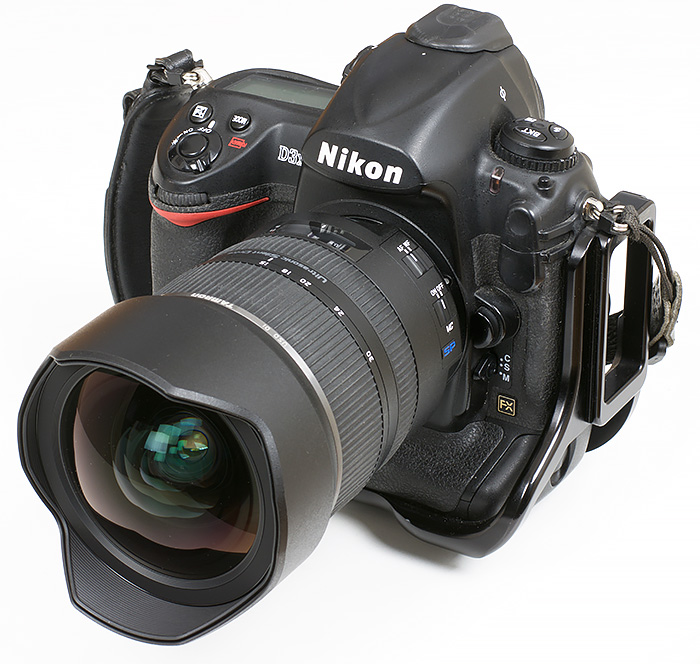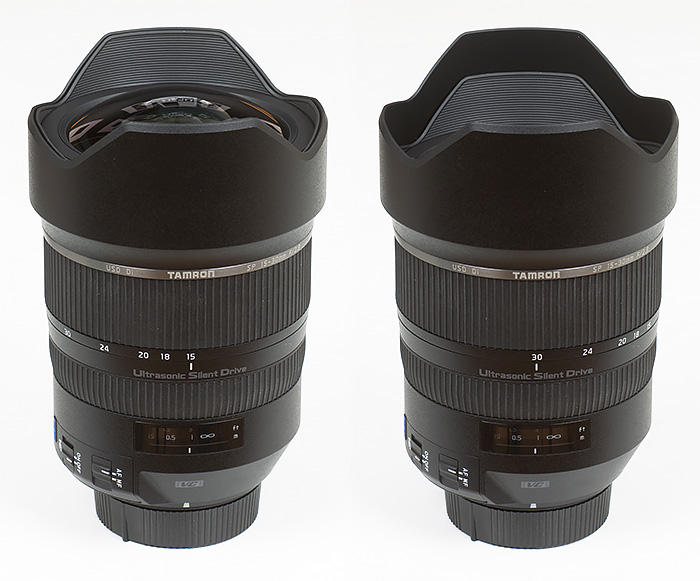|
Page 1 of 3

Review by Markus Stamm, published November 2016
Introduction
With the rise of digital photography, we've also seen an evolution of ultra wide lenses, both for APS-C in the beginning as well as for full-frame sensors later, leading to quite some product announcements from nearly all manufacturers over the recent years, including a few fairly impressive ones like the Nikkor AF-S 14-24/2.8 for example. Tamron as one of the bigger 3rd-party companies so far has focused mainly on APS-C offerings in the ultra-wide segment and mostly ignored the battle for "bigger, better, wider" full frame lenses. They did offer a UWA zoom though, the AF 17-35mm f/2.8-4 that was announced back in 2003, but the reputation of that lens was mixed at best.
This has changed with the announcement of the SP 15-30mm f/2.8 VC USD. Tamron obviously feels confident to compete with the top lenses in this market segment with their first shot in more than a decade. With a quite complex optical formula of 18 elements in 13 groups, including 3 LD elements as well a 3 molded glass elements, one of which being what Tamron calls a 'XGM' element ('eXpanded Glass Molded Aspherical') plus a pretty sound feature set including an attractive zoom range going down to 15mm, a fixed aperture of f/2.8 for the whole range and optical stabilization on top Tamron created a lens attractive to both ambitious amateurs as well as professionals.
Sweet cherry on top: given the specs and its feature set, the lens is actually quite affordable. At the time of this review, it retails for around 1000 EUR. That's of course still a lot in absolute terms, but also 800 EUR less than the Nikkor 14-24.
 There's two things about this lens that the spec sheet can only hint at, but which actually need to be experienced in reality: size and weight. The image above gives an impression of the former, the weight needs to be experienced, though. It's almost a relief that Tamron didn't opt for a metal housing and went for plastic instead (with a metal mount, of course), because that would have made the lens even heavier. Nonetheless, likely partly due to the weight of 1.1 kg, the lens feels definitely well designed and sturdy.
There's two things about this lens that the spec sheet can only hint at, but which actually need to be experienced in reality: size and weight. The image above gives an impression of the former, the weight needs to be experienced, though. It's almost a relief that Tamron didn't opt for a metal housing and went for plastic instead (with a metal mount, of course), because that would have made the lens even heavier. Nonetheless, likely partly due to the weight of 1.1 kg, the lens feels definitely well designed and sturdy.
As some competitors, the Tamron features a huge front element, protected by a hood that actually consists of two parts: a fixed one on the outside, plus a smaller rippled inner one, that moves with the front group while zooming. One might wonder if the inner hood actually delivers any additional value, but it might have some influence on the flare behaviour (see next page).
In any case, there is one drawback of this design: there is no filter thread, so if you're looking for an ultrawide to regularly use filters with, the Tamron is not the best choice.

The lens features a broad zoom ring and a thinner focus ring, both of which operate smoothly and are nicely damped. We occasionally mention the challenges for your muscle memory when the zoom and focus ring operation works in the opposite direction of native Nikkor lenses (on most Sigma lenses, for example). Tamron offers sort of a compromise: the zoom ring rotates "Nikon style", while the focus ring rotates in the opposite direction, so "Canon style". Which means when focusing manually you should be aware that the AF indicator in the viewfinder suggests the wrong direction of focus adjustment.
The SP 15-30/2.8 VC uses Tamron's version of an ultrasonic drive called USD, so AF operation is virtually silent and quite fast. A tad slower than the Nikkor AF-S 14-24 in direct comparison, but still on a very high level - for an ultra-wide lens the AF speed is usually not the most important feature anyway.
The Tamron is a G-type lens, so there is no aperture ring.
| Specifications |
|---|
| Optical construction | 18 elements in 13 groups, incl. 1 XGM element |
| Number of aperture blades | 9 |
| min. focus distance | 0.28 m (max. magnification ratio 1:5) |
| Dimensions | 98.4x145mm |
| Weight | 1100g |
| Filter size | no front filter possible |
| Hood | built-in, petal shaped |
| Other features | internal ultrasonic motor, anti-dust/water-repellent coating on front element, moisture-resistant construction |
|